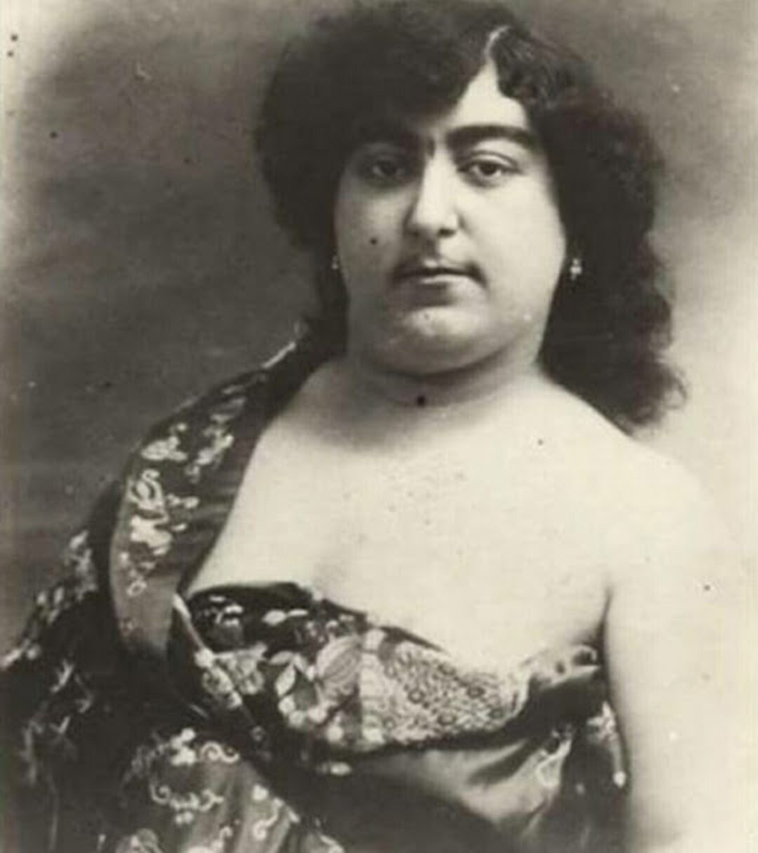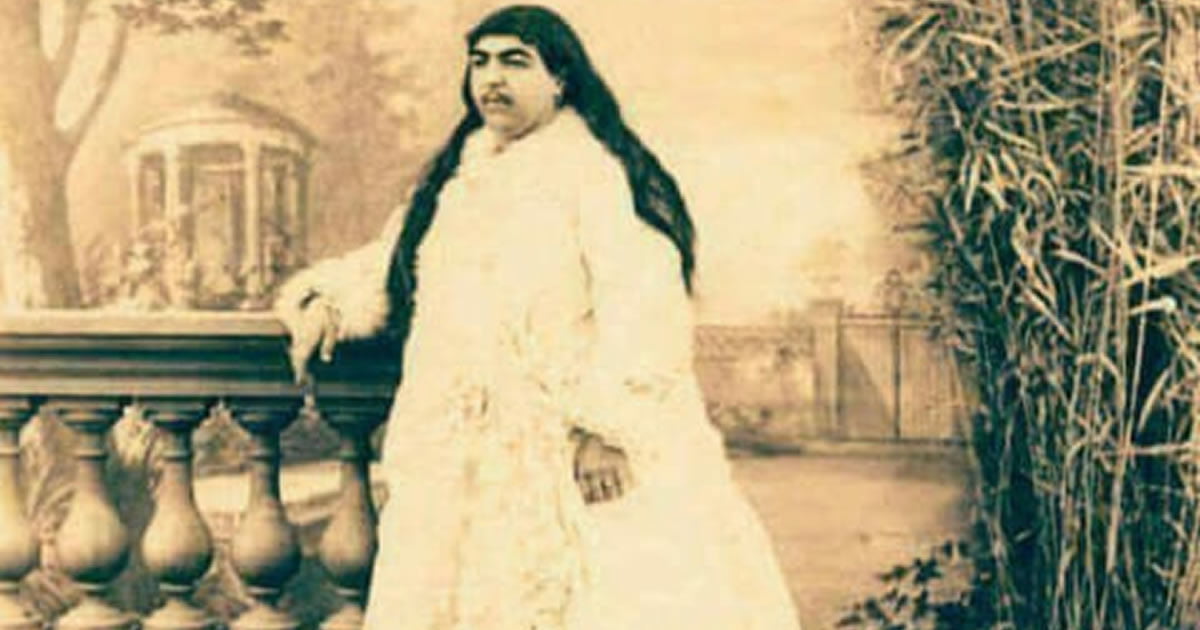
Persian Princess Qajar Dynasty The Beauty Symbol in 19th Century Persian princess, Qajar
The untold truth of a beauty symbol of Persia - Princess Qajar By Benjy P. June 4, 2023 • The legend of Princess Qajar became a 21st Century meme misrepresenting facts about a glorious era in 19th century Persian history • Naser al-Din Shah was the longest reigning monarch and his rule was known as the Golden Years of Qajar

Pin on Adorned Central Asia
Tadsch os-Saltaneh (* 1883; † 25. Januar 1936; persisch تاج السلطنه) war eine persische Prinzessin der Qadscharen -Dynastie und Autobiografin. Sie war Tochter des Nāser ad-Din Schāh, [1] ihre Mutter war Turan os-Saltaneh, mit der der Schah eine Zeitehe einging.

A verdade por trás da história da "Princesa Qajar"
The Qajar dynasty (Persian: دودمان قاجار; 1789-1925) was an Iranian dynasty founded by Mohammad Khan (r. 1789-1797) of the Qoyunlu clan of the Turkoman Qajar tribe.. The dynasty's effective rule in Iran ended in 1925 when Iran's Majlis, convening as a constituent assembly on 12 December 1925, declared Reza Shah, a former brigadier-general of the Persian Cossack Brigade, as the.

Princess Qajar Of Persia
The legendary "Princess Qajar" is actually a conflation of two 19th-century Persian royals — Fatemeh Khanum "Esmat al-Dowleh" and Zahra Khanum "Taj al-Saltaneh." Women's Worlds in Qajar Iran Photos of "Princess Qajar" have gone viral but they barely touch on the truth about this Persian princess. They say that a picture is worth a thousand words.

Qajar Woman By Shakiba Rl5 Painting by Salma
The Real Story Behind Princess Qajar The World's Most Beautiful Woman Unexplained Mysteries 1.93M subscribers Subscribe 1.4K Share 131K views 5 years ago The real story behind princess Qajar the.

The Most Beautiful Persian Princess خشگلترین زنان قاجار YouTube
The Qajar dynasty roughly corresponds to what historian Eric Hobsbawm called "the long 19th century," which began with the French Revolution in 1789 and ended with World War I. Persia's.

Persian Princess Qajar Dynasty The Beauty Symbol in 19th Century Prenses, Güzel kadınlar, Kadın
Every culture has its own standards. Moreover, time also affects these standards. What is beautiful may not be so anymore. For example, in Persian culture, t.

Photography in Qajar Iran Persian princess, Persian culture, Asian history
Life Good News Science Funny Search Persian Princess Qajar Dynasty: The Beauty Symbol in 19th Century Life Of Persian Princess Her full name was Zahra Khanom Tadj es-Saltaneh (1883-1936). She was the daughter of the King of Persia, Naser al-Din Shah. She was the memoirist of the Qajar Dynasty.

Persian Princess Qajar Dynasty The Beauty Symbol in 19th Century Prenses, Güzellik, Savaşçılar
Princess Qajar was a feminist, a women's rights activist, and a memoirist. Princess Qajar was the symbol of beauty in the 19th century Iran Princess Qajar was a well-educated, intellectual, free-spirited soul and beauty. Back in the day, poets wrote poems about the beauty of Princess Qajar.

The untold truth of a beauty symbol of Persia Princess Qajar
Princess Fatemeh Khanum "Esmat al-Dowleh" was the princess of Persia, modern-day Iran. She was the daughter of King Nasir al-Din Shah Qajar, who ruled Persia from 1848 to 1896 and one of his wives Taj al-Dowleh. People today look at her historic pictures and laugh. And nobody ever fails to notice her thick mustache, unibrow, and the fact.

Persian Princess Qajar Dynasty The Beauty Symbol in 19th Century Prenses, Güzellik, Bıyıklar
Mai 8, 2022 von Marcus prinzessin qajar Vor einiger Zeit blieben einige Fotos, die häufig in sozialen Medien geteilt wurden, lange auf der Tagesordnung und wurden viel diskutiert. Fotografien des Harems des iranischen Herrschers Schah Nasir al-Din haben eine hitzige Debatte über „Schönheit" ausgelöst.

NAKARAJAN Persian Princess Qajar Dynasty The Beauty Symbol in the 19th Century
Zahra Khanom or Taj al-Saltaneh (1884 - 25 January 1936; Persian: تاجالسلطنه) also known as Princess Qajar, was a princess of the Qajar dynasty, known as a feminist, a women's rights activist and a memoirist. She was the daughter of Naser al-Din Shah, the King of Persia from 1848 to May 1896.

Princess Qajar was considered a beauty symbol in Persia in the 1900s. In fact, 13 men committed
Eine der vielen Legenden des Internets möchte, dass Prinzessin Qajar - eine wahrhaft existente Figur, Frau von Naser al-Din Shah Qajar - als so schön angesehen wurde, dass sie 13 junge Menschen den Kopf verlieren ließ, die von einem unmöglichen und unkontrollierbaren Verlangen verbrannt wurden. Falsch.

Princess Qajar The Revolutionary Persian Princess
The beauty criteria of Princess Qajar Qajar princess were obese and had a masculine appearance. This was a sign of not only fertility, but physical strength, wealth, and health. It is a common misconception, however, that this was a beauty criterion.

Persian Princess Qajar Dynasty The Beauty Symbol in 19th Century Persian princess, Qajar
Zahra Khanom or Taj al-Saltaneh (1884 - 25 January 1936; Persian: تاجالسلطنه) also known as princess Qajar, was a princess of the Qajar dynasty, known as a feminist, a women's rights activist and a memoirist. She was the daughter of Naser al-Din Shah, the King of Persia from 1848 to May 1896. She was the love interest of Yousef Abdu Aref Qazvini who wrote his poem Fe eh ya Qajar.

Geschichte aus dem wirklichen Leben der iranischen Prinzessin Qajar TUNLOG
Princess Zahra Khanom Tadj es-Saltaneh or the princess of Qajar was the symbol of beauty in Iran not only because people considered her a beautiful woman but also because she was smart and outspoken. She was a feminist and a groundbreaker for women's rights in Persia.